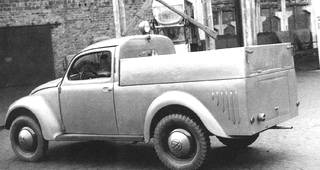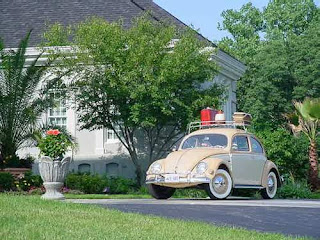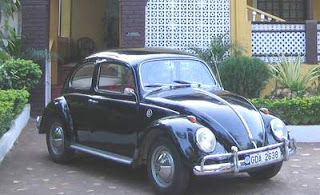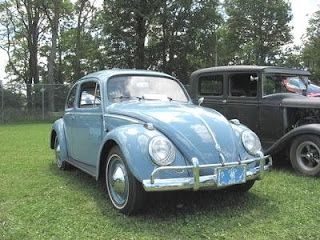Volkswagen AG, automobile manufacturer based in Wolfsburg, Germany. Founded in 1938 under the control of the German government, Volkswagen rebuilt itself from near ruin in World War II (1939-1945) to become one of the world’s largest automakers. The company’s success began in the 1960s with the Beetle, the roundish compact car that became the world’s best-selling automobile.
Volkswagen, which means “the people’s car,” was the brainchild of Ferdinand Porsche, a German automotive engineer. Porsche, who with his son Ferry later introduced the Porsche sports car, envisioned a simple vehicle for working people. He found support for his idea in 1934 from German dictator Adolf Hitler. In 1937 Hitler formed the Gesellschaft zur Vorbereitung des Volkswagens (Company for the Development of People’s Cars), later called Volkswagenwerk, to begin planning the construction of the car factory. Hitler himself laid the foundation stone for the Volkswagen factory at Wolfsburg at a ceremony in May 1938.
Shortly after the Volkswagen plant began producing military vehicles for the German government in World War II. The factory was heavily damaged during the war. Postwar British occupation forces led the reconstruction of the plant and supervised initial production of Volkswagens. The British returned the plant to German government control in 1949.
In the 1950s the company expanded by building automobile plants and selling cars around the world. Acceptance of Volkswagen in the United States was slow until the company enlisted the services of the New York advertising agency Doyle Dane Bernbach in 1959. The agency came up with the name “Beetle” and launched a series of advertisements that played off the car’s odd shape and design. The car soon became enormously popular. Annual U.S. sales of Volkswagens, mostly Beetles, peaked at 582,009 in 1968. By 1973 total production of the Beetle reached 16.5 million, making it the world’s best-selling car.
The annual production rate of the Beetle, however, began to decline in the early 1970s. In 1977 Volkswagen stopped selling the Beetle in the United States because its engine no longer met U.S. safety and emission standards. By 1996 Volkswagen had discontinued production of the Beetle in every country except Mexico because of declining popularity and Volkswagen’s desire to direct attention to other models.
Among the other models were the Passat, a front-wheel-drive sedan, which the company introduced in 1973. In 1974 Volkswagen nearly went bankrupt due to financial losses during the model-changeover period. However, Volkswagen regained its market in the late 1970s and early 1980s on strong sales of the Golf—sold as the Rabbit in the United States—and the Jetta. Those models helped Volkswagen become Europe’s leading carmaker in 1985. Also in the 1980s the company purchased interests in several automobile manufacturers, acquiring Spain’s SEAT (Sociedad Espanola de Automoviles de Turismo) and a one-third interest in the Czech Republic’s Škoda.
Also in 1998, Volkswagen introduced a redesigned version of the classic Beetle and acquired British luxury carmaker Rolls-Royce Motor Cars. The New Beetle, as it was called, became an immediate success, with initial consumer demand outstripping supply. In 2003 the company produced its last traditional Beetle at its plant in Puebla, Mexico. Total production of the classic Beetle came to 21,529,464. The last Beetle off the assembly line was marked No. 21,529,464 and sent to a museum in Germany, the ultimate “punch buggy.”




































































































































































0 comments:
Post a Comment